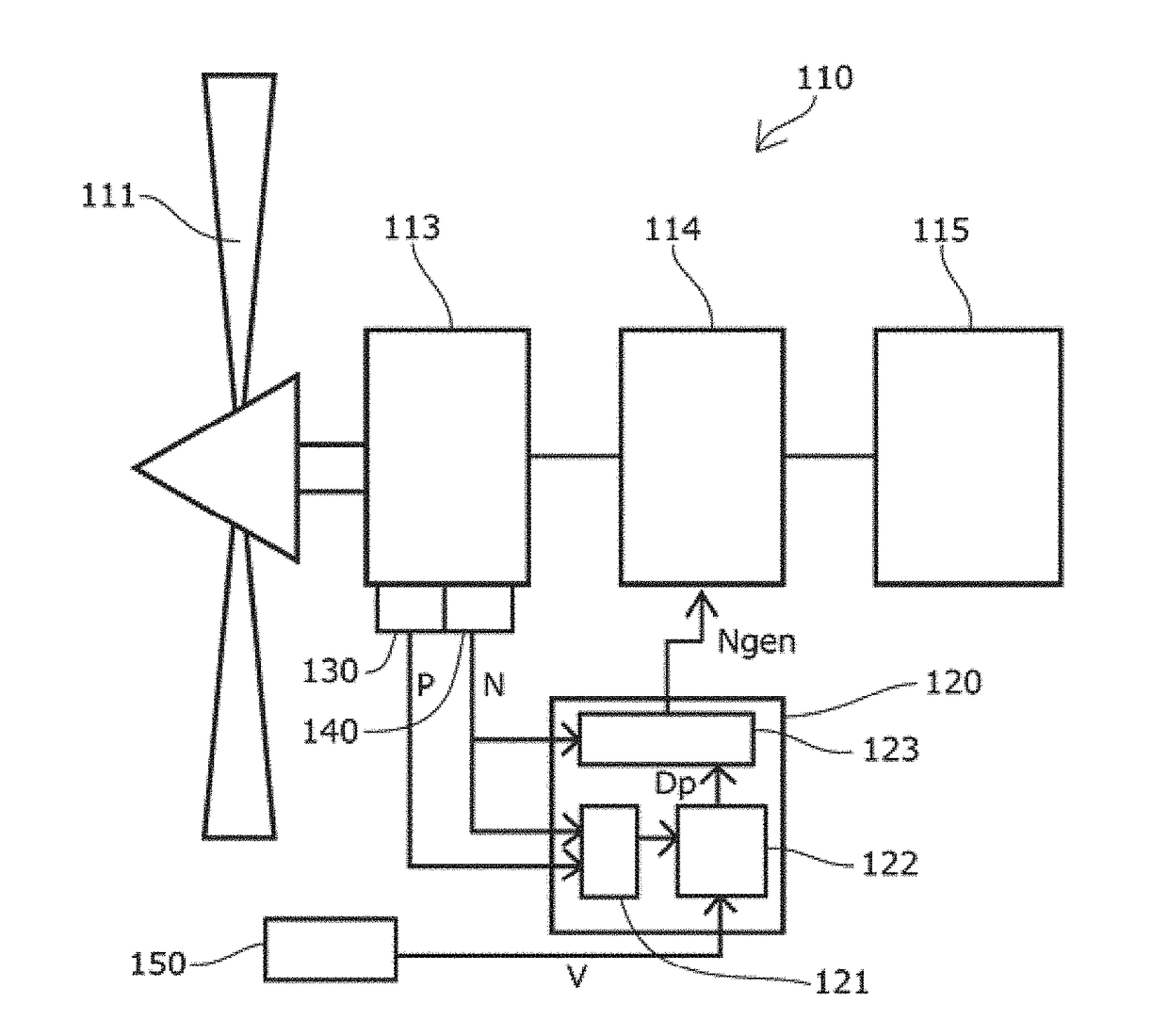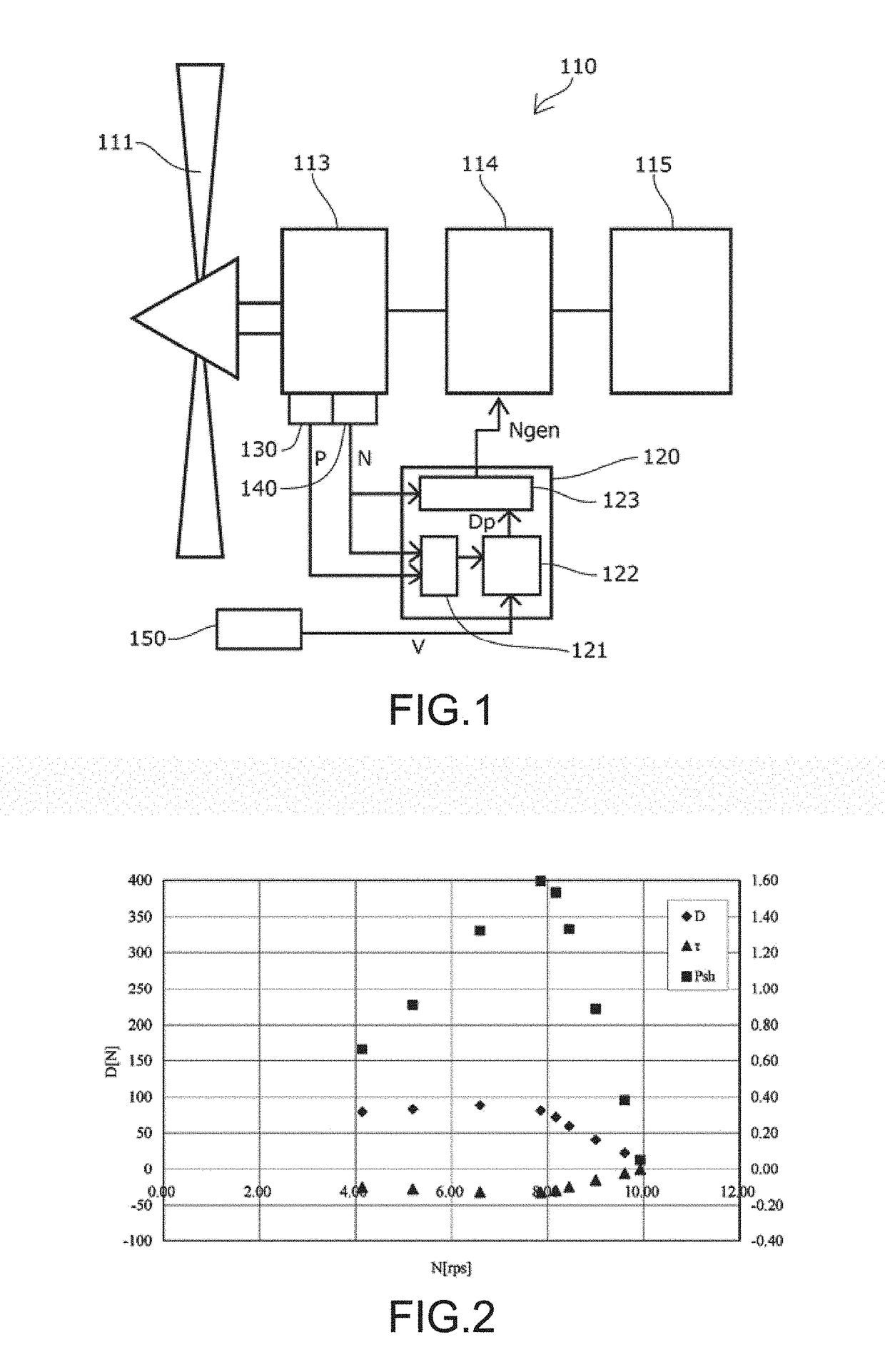Electrified Aircraft and Method of Controlling Regenerative Electric Power of Electrified Aircraft
a technology of electrified aircraft and regenerative electric power, which is applied in the direction of aircraft, sustainable transportation, transportation and packaging, etc., can solve the problems of inability to control the path angle or the descending rate directly, the workload of the pilot is significantly increased, and the operation tends to be complex, so as to maximize the safe generation of electric power and good response
- Summary
- Abstract
- Description
- Claims
- Application Information
AI Technical Summary
Benefits of technology
Problems solved by technology
Method used
Image
Examples
first embodiment
[0121]FIG. 1 is an explanatory diagram of a propulsion drive system of an electrified aircraft according to a first embodiment of the present invention.
[0122]As shown in FIG. 1, a propulsion drive system 110 of the electrified aircraft is configured such that a propeller 111 is driven by an electric drive motor 113, or the electric drive motor 113 generates electric power by rotating the propeller 111.
[0123]The electric drive motor 113 is driven by electric power supplied from an electric power source 115 such as a storage battery, or generates electric power to supply the electric power to the electric power source115, and an inverter 114 controls the electric power.
[0124]A control unit, i.e., a drive control means 120, includes inside data groups relating to a relationship between a rotation number Ngen and a drag force Dp of a propeller specific to an individual electrified aircraft as shown in FIG. 2. At the time of generating an electric power, a drag operation unit 122 estimat...
second embodiment
[0133]FIG. 4 is an explanatory diagram of a propulsion drive system of an electrified aircraft according to a second embodiment of the present invention.
[0134]As shown in FIG. 4, a propulsion drive system 210 of the electrified aircraft is configured such that a propeller 211 is driven by an electric drive motor 213, or the electric drive motor 213 generates electric power by rotating the propeller 211 similar to the first embodiment.
[0135]The electric drive motor 213 is driven by electric power supplied from an electric power source 215 such as a storage battery, or generates electric power to supply the electric power to the electric power source 215, and an inverter 214 controls the electric power.
[0136]In this embodiment, the propeller 211 is a variable pitch propeller including a variable pitch mechanism 212, and the variable pitch mechanism 212 has a function to change a pitch angle β from a pitch angle βTO used at a take-off to a pitch angle β0 that is smaller than the pitch ...
third embodiment
[0143]FIG. 7 is an explanatory diagram of a propulsion drive system of an electrified aircraft according to a third embodiment of the present invention.
[0144]As shown in FIG. 7, a propulsion drive system 310 of the electrified aircraft is configured such that a propeller 311 is driven by an electric drive motor 313, or the electric drive motor 313 generates electric power by rotating the propeller 311 similar to the second embodiment.
[0145]The electric drive motor 313 is driven by electric power supplied from an electric power source 315 such as a storage battery, or generates electric power to supply the electric power to the electric power source 315, and an inverter 314 controls the electric power.
[0146]The propeller 311 is a variable pitch propeller including a variable pitch mechanism 312, and the variable pitch mechanism 312 has a function to change the pitch angle β from the pitch angle βTO used at a take-off to the pitch angle β0 that is smaller than the pitch angle βTO.
[014...
PUM
 Login to View More
Login to View More Abstract
Description
Claims
Application Information
 Login to View More
Login to View More - R&D
- Intellectual Property
- Life Sciences
- Materials
- Tech Scout
- Unparalleled Data Quality
- Higher Quality Content
- 60% Fewer Hallucinations
Browse by: Latest US Patents, China's latest patents, Technical Efficacy Thesaurus, Application Domain, Technology Topic, Popular Technical Reports.
© 2025 PatSnap. All rights reserved.Legal|Privacy policy|Modern Slavery Act Transparency Statement|Sitemap|About US| Contact US: help@patsnap.com



